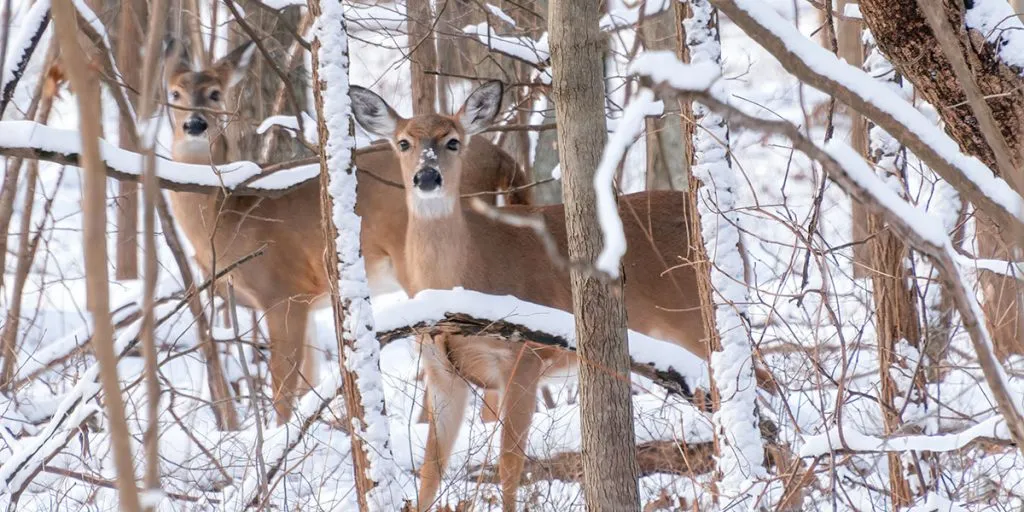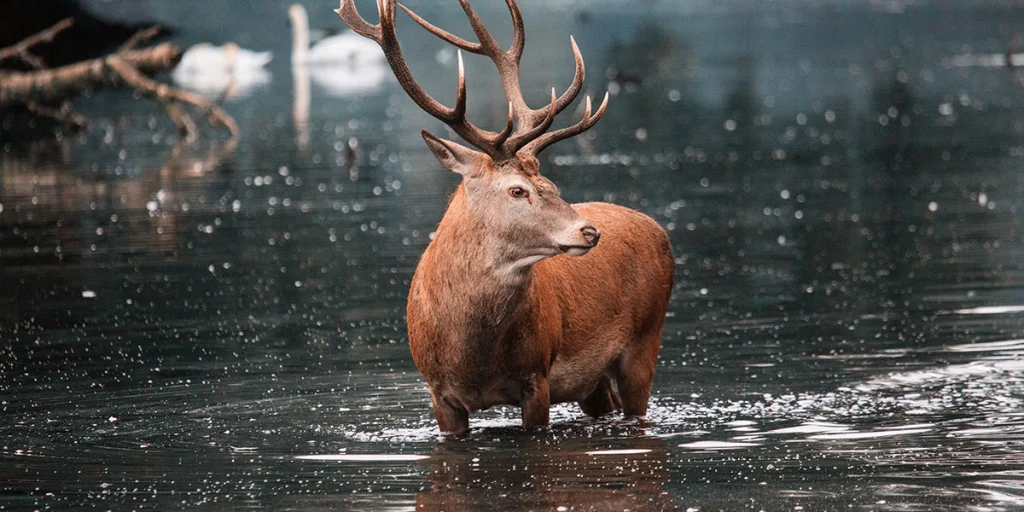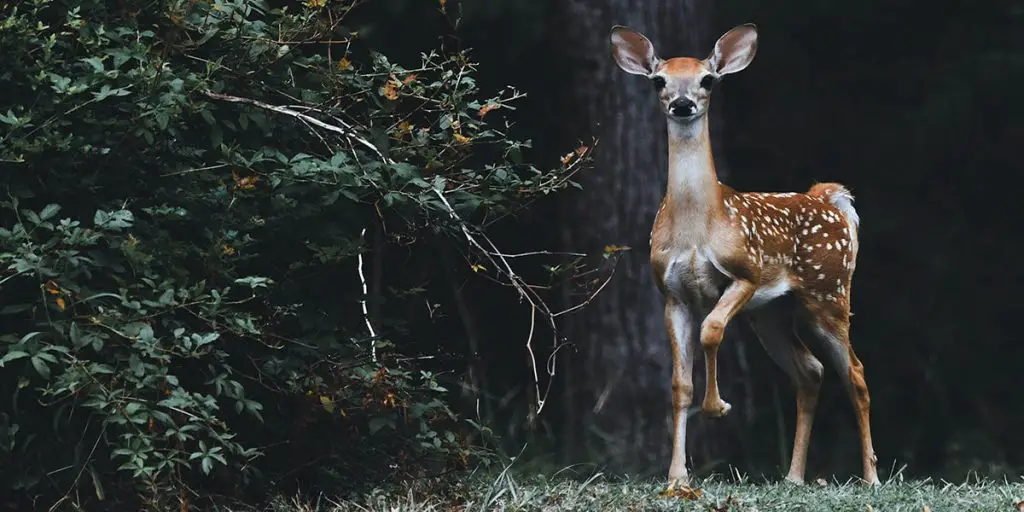If you’re a nature lover and you want to catch sight of a deer, you must first learn their general sleeping patterns. Especially during the winter months, deer will be much more difficult to spot in the wild.
Deer do not hibernate in winter. They are active year-round. While deer will slow down their activity, they will never go into full hibernation. Before winter begins, most deer will feed extra on nuts and available vegetation to grow their fat reserves and thick fur. This helps them get through the cold winter months.
Especially when snow and ice cover the forest, it will become much more difficult to spot a wild deer. Not because they won’t stand out from the white landscape, but because they’ll shelter from cold temperatures as much as possible.
Where Deer Go In Winter
Generally, deer will remain within their natural habitat during the colder winter months. It may appear to us humans as though they are hibernating, because it’s much more difficult to spot them in winter. That’s probably where the common misconception about deer hibernating first started.
But deer aren’t hibernating at all, they’re simply seeking out areas that provide them with shelter from harsh winds and freezing snow. They will spend their days in dense forests that provide them with much-needed shelter and warmth.
Coniferous trees keep their needles during winter, acting as a sort of blanket for deer. This is where you would be able to find most of them hiding away, if you were lucky enough to find one.
Less Active In Cold Weather
Once they’ve found a warm shelter, deer will move around very little for around three months. They will keep hunkered down and sleep a lot until the worst of the cold weather has subsided. Once the cold passes, they increase their activity levels again and feel more comfortable foraging for food.
It’s a similar strategy to some smaller mammals, much like how a raccoon survives the cold winter.
Their metabolisms dictate their activity levels during winter. To a deer, they have to work out whether going to get food from an area further away is actually worth it in terms of the amount of energy they’ll use to get there. If it’s easier for deer to stay in their sheltered area, then they will almost always do so.
Do Deer Get Cold In Winter?
Deer generally don’t get very cold in winter, because they are able to keep the cold out with their thick winter fur, lowered metabolism, and relatively warm forest shelter. All these factors will contribute to keeping their internal temperature up in the cold winter months.
During winter, deer will grow long, dark, thick hairs known as ‘guard hairs‘. These guard hairs work as an extra layer of protection between a deer’s skin and the cold winter temperatures. Because this extra fur is so dense, it’s much harder for a deer to feel the cold.
Guard hairs can absorb more of the sun’s heat (because they are dark in color), and they are also capable of trapping that heat for longer to help deer stay warmer.
Deer Have To Prepare For Winter
Deer don’t just wait for their guard hairs to grow though, crossing their hooves hoping that will be enough. They start preparations in the fall, mainly by eating more food to form a protective layer of fat. This helps them in two ways during winter.
Not only will the extra fat keep them warm when temperatures plummet, but it also gives them a higher chance of survival in the scarce winter months. A lot less food will be available in cold weather.
The final major defense mechanism that deer have against the cold is their skin. It has oil-producing glands, which work overtime in winter. The oil that is produced acts as a water repellent, keeping the cold out. If a deer happens to get wet, the oil glands help them to survive against hypothermia in the freezing temperatures.
Slowing Down Their Metabolism
A deer typically has a heart rate of around 50-70 beats per minute. In winter, the animals are able to drop this to around 40 beats per minute. Slowing down their metabolism can help deer preserve energy during the cold months, and allows them to eat less food.
By lowering their heart rate, the digestive system of the animals also slows down. This process is similar to what happens during hibernation, just on a less extreme scale. This process is called ‘torpor‘, and it’s distinctly different from regular winter sleep. However, torpor is also a state of physical and mental inactivity.
Just like hibernation, torpor involves some level of physiological change. However, the energy conservation in a torpor-like state is much less drastic, and the animal is able to quickly shift from this state. Hibernating similar to a bear actually involves long-term dormancy, which involves a long process of waking up.
The Winter Survival Strategy Of A Deer
Deer don’t hibernate, but they do have bodies and behavior patterns that have adapted very well to winter conditions. Their fur (including guard hairs), slower heart rates, fat reserves, and oily skin work together to protect them from temperatures that would otherwise threaten their lives.
So whilst deer don’t hibernate, they should still be seen as hardy survivors when winter rolls around. Their state of torpor can be seen as a mini-version of winter sleep. However, their state of torpor is clearly different from hiberation.
The animals can definitely be active during the colder months. So don’t be surprised if you see some of them hopping through the snow!



